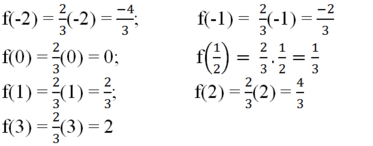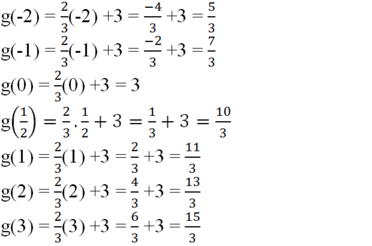Hãy nhập câu hỏi của bạn vào đây, nếu là tài khoản VIP, bạn sẽ được ưu tiên trả lời.

+) Với \(x< 0\)chọn \(x_1< x_2< 0\), ta có :
\(f\left(x_1\right)-f\left(x_2\right)=\left(x_1^4-x_2^4\right)+2\left(x_1^2-x_2^2\right)=\left(x_1-x_2\right)\left(x_1+x_2\right)\left(x_1^2+x_2^2+2\right)\)
Vì \(x_1< x_2< 0\) nên \(\hept{\begin{cases}x_1-x_2< 0\\x_1+x_2< 0\end{cases}}\) và \(x_1^2+x_2^2+2>0\)
Suy ra \(\left(x_1-x_2\right)\left(x_1+x_2\right)\left(x_1^2+x_2^2+2\right)>0\)
\(\Rightarrow\hept{\begin{cases}x_1< x_2< 0\\f\left(x_1\right)>f\left(x_2\right)\end{cases}}\) => Hàm số nghịch biến.
+) Tương tự, với \(x\ge0\)ta chọn \(x_2>x_1\ge0\) thì ta có \(\hept{\begin{cases}x_1-x_2< 0\\x_1+x_2\ge0\end{cases}}\) và \(x_1^2+x_2^2+2>0\)
Suy ra \(\left(x_1-x_2\right)\left(x_1+x_2\right)\left(x_1^2+x_2^2+2\right)< 0\)
\(\Rightarrow\hept{\begin{cases}x_2>x_1\ge0\\f\left(x_2\right)>f\left(x_1\right)\end{cases}}\) => Hàm số đồng biến.

Ta có tập xác định của hàm số : \(D=\text{[}0;+\infty\text{)}\)
Gọi \(x_1,x_2\) là các giá trị thuộc tập xác định của hàm số và \(0\le x_1< x_2\)
\(\Rightarrow x_1-x_2< 0\Leftrightarrow\left(\sqrt{x_1}-\sqrt{x_2}\right)\left(\sqrt{x_1}+\sqrt{x_2}\right)< 0\Leftrightarrow\hept{\begin{cases}\sqrt{x_1}-\sqrt{x_2}< 0\\\sqrt{x_1}+\sqrt{x_2}>0\end{cases}}\)
Xét : \(g\left(x_1\right)-g\left(x_2\right)=\left(3\sqrt{x_1}-2\right)-\left(3\sqrt{x_2}-2\right)=3\left(\sqrt{x_1}-\sqrt{x_2}\right)< 0\)
\(\Rightarrow g\left(x_1\right)< g\left(x_2\right)\)
Vậy ta có \(\hept{\begin{cases}0\le x_1< x_2\\g\left(x_1\right)< g\left(x_2\right)\end{cases}}\) => Hàm số đồng biến với mọi \(x\ge0\)(đpcm)

a: Khi x>0 thì y>0
=> Hàm số đồng biến
Khi x<0 thì y<0
=> Hàm số nghịch biến

Lời giải:
Lấy $x_1>x_2$ với \(x_1,x_2\in R\) \(\Rightarrow x_1-x_2>0\)
Khi đó:
\(f(x_1)=5x_1+3; f(x_2)=5x_2+3\)
\(\Rightarrow f(x_1)-f(x_2)=5(x_1-x_2)>0\)
Vậy với \(x_1>x_2\in R\Rightarrow f(x_1)>f(x_2)\). Suy ra hàm số trên đồng biến trên R
------------------------
\(f(x)=g(x)\)
\(\Leftrightarrow 3x^2-8x+4=3x+4\)
\(\Leftrightarrow 3x^2-11x=0\Leftrightarrow x(3x-11)=0\)
\(\Rightarrow \left[\begin{matrix} x=0\\ x=\frac{11}{3}\end{matrix}\right.\)

a) Ta có:

b) Ta có:

c) Từ kết quả câu a, b ta được bảng sau:

Nhận xét:
- Hai hàm số

là hai hàm số đồng biến vì khi x tăng thì y cũng nhận được các giá trị tương ứng tăng lên.
- Cùng một giá trị của biến x, giá trị của hàm số y = g(x) luôn luôn lớn hơn giá trị tương ứng của hàm số y = f(x) là 3 đơn vị.

Bài 1:
Để \(F\left(x\right)=G\left(x\right)\) thì \(3x^2-8x+4=3x+4\)
\(\Leftrightarrow3x^2-11x=0\)
\(\Leftrightarrow x\left(3x-11\right)=0\)
\(\Leftrightarrow\left[{}\begin{matrix}x=0\\x=\dfrac{11}{3}\end{matrix}\right.\)
Lời giải:
a)
\(f(x)=g(x)\Leftrightarrow 7x=2+5x^2\)
\(\Leftrightarrow 5x^2+2-7x=0\)
\(\Leftrightarrow (5x^2-5x)-(2x-2)=0\)
\(\Leftrightarrow 5x(x-1)-2(x-1)=0\Leftrightarrow (5x-2)(x-1)=0\)
\(\Rightarrow \left[\begin{matrix} x=\frac{2}{5}\\ x=1\end{matrix}\right.\)
b)
Ta có: \(\left\{\begin{matrix} f(-x)=7(-x)=-7x\\ -f(x)=-7x\end{matrix}\right.\Rightarrow f(-x)=-f(x)\)
\(\left\{\begin{matrix} g(-x)=2+5(-x)^2=2+5x^2\\ g(x)=2+5x^2\end{matrix}\right.\Rightarrow g(-x)=g(x)\)
c)
Xét \(x_1< x_2< 0\) đều thuộc TXĐ:
Khi đó:
\(g(x_1)-g(x_2)=2+5x_1^2-(2+5x_2^2)=5x_1^2-5x_2^2=5(x_1-x_2)(x_1+x_2)\)
Vì \(x_1< x_2< 0\Rightarrow x_1-x_2< 0; x_1+x_2< 0\)
Do đó: \(g(x_1)-g(x_2)=5(x_1-x_2)(x_1+x_2)>0\Rightarrow g(x_1)> g(x_2)\)
Vậy hàm số nghịch biến khi $x< 0$
------------
Xét \(x_1> x_2>0\) thuộc TXĐ:
Khi đó:
\(g(x_1)-g(x_2)=(2+5x_1^2)-(2+5x_2^2)=5x_1^2-5x_2^2=5(x_1-x_2)(x_1+x_2)\)
Vì \(x_1> x_2>0\Rightarrow x_1-x_2>0; x_1+x_2>0\)
\(\Rightarrow g(x_1)-g(x_2)>0\Rightarrow g(x_1)> g(x_2)\)
Vậy hàm số đồng biến khi $x>0$